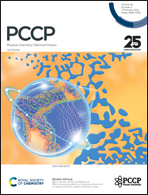Molecular docking, 3D-QASR and molecular dynamics simulations of benzimidazole Pin1 inhibitors
Abstract
Pin1 (protein interacting with never-in-mitosis akinase-1) is a member of the family of peptidylprolyl cis–trans isomerases (PPIases) that specifically recognize and isomerize substrates containing phosphorylated Ser/Thr-Pro sequences. Pin1 is involved in many cellular processes and plays a key role in the cell cycle, transcriptional regulation, cell metabolism, proliferation and differentiation, and its abnormalities lead to degenerative and neoplastic diseases. Pin1 is highly expressed in human cancers and promotes the development of tumors by activating multiple oncogenes and inactivating multiple tumor suppressor genes, making it an attractive target for cancer therapy. In this study, we investigated the binding mechanism and conformational relationship between benzimidazole Pin1 inhibitors and Pin1 proteins by molecular docking, three-dimensional quantitative structure–activity relationship (3D-QSAR) modeling, binding free energy calculations and decomposition, and molecular dynamics simulations. Molecular docking and molecular dynamics simulations disclosed the most likely binding pose of benzimidazoles with the Pin1 protein. The results of 3D-QSAR modeling indicated that electrostatic fields, hydrophobic fields and hydrogen bonding play important roles in the binding process of inhibitors to proteins. The binding free energy calculations and energy decomposition indicated that Lys63, Arg69, Cys113, Leu122, Met130, and Ser154 may be key residues in the binding of benzimidazole-based inhibitors to the Pin1 protein. This study provides an important theoretical basis for the design and optimization of benzimidazole compounds.



 Please wait while we load your content...
Please wait while we load your content...